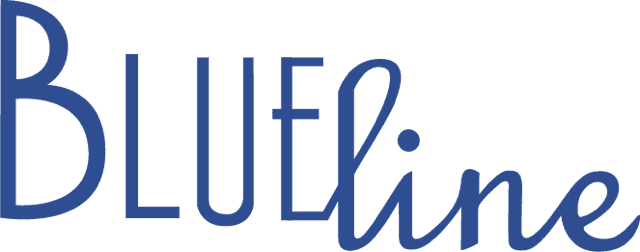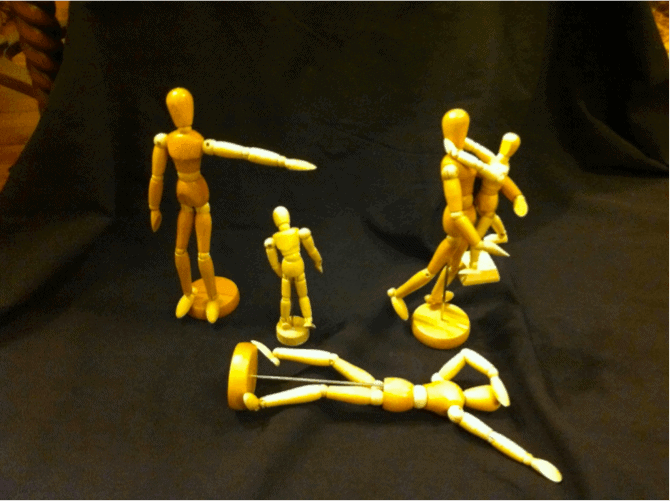To continue from the previous blog entry, I’m still thinking about the many ways that learning and communication are connected.
Le’s look at an example from the field of psychological sciences.
My wife, Robbie, is a Licensed Marriage and Family Therapist (LMFT) who frequently uses story and metaphor as tools for creating new ways of thinking and behaving within relationships. (Which is, in fact, not so different from the work that her husband does in creating organizational behavior change! But we’ll circle back to that in a moment.)
She was working with a little girl whose family brought her to counseling because she was starting to act out in belligerent ways at school. Robbie asked the little girl to create a a sculpture of her family by posing a series of mannequins. This is what the little girl built:
That’s “daddy”on the left; the little girl (our client) is next to him; Grandma is down below; and over on the left is “mommy.” On her right is “big brother.”
Sometimes I like to show this photo to audiences and ask them: why is this little girl acting out in school?
I am always amazed by the insights that people draw from this simple metaphorical image. They say things like:
“The little girl is trapped; everyone else is on the perimeter and can “exit” the image, but the girl is surrounded.”
“No one is looking at the little girl. I wonder if she feels like she’s not there.”
“Yeah, but look at the marriage! I have a feeling that mommy and daddy aren’t doing so great.”
Not bad! And the therapist affirms that these remarkably nuanced readings are indeed accurate.
Here’s where I’m going with all of this.
This is, strictly speaking, an exercise in communication. By posting this photo, I sent a message to you; and you responded by drawing from your own mental models in order to find patterns and create meaning. It’s the classic “sender/interpreter” model of communication theory, and if you remember that model from your Freshman year, then you know that this happens instantly and without a great deal of effort on your part.
The times that I have conducted this exercise with groups in organizational settings, someone usually asks: “how is the little girl? Is she doing better?” It’s amazing how this nameless, faceless, “metaphorical” image creates emotional connection and personal engagement. (The answer is that the little girl is doing great, now that each of the family members have embraced small but critical shifts in behavior.)
So my exercise in family counseling is over.
For the organizational change agent, there’s something happening here that is very powerful that we cannot afford to ignore, and it has to do with how images, metaphors, and stories engage the mind to create shared meaning.
In my next blog post, I’ll move this discussion over more specifically to the organizational world. And I’ll show you how we have leveraged this kind of “participative, narrative-based communication” to generate new awareness, new mental models, and new behaviors for companies that are struggling with challenges much like yours.


